ARCHITECT EDUARDO ABOUMRAD
Eduardo Aboumrad graduated with a Bachelor’s degree in Architecture from Universidad Iberoamericana in Mexico City. He founded Fi Arquitectos in Mexico City in 2005. His projects are characterized by their focus on safeguarding light and shadow when creating spaces, integrating landscaping into architecture. Each project is unique, offering outstanding creativity and a strong sense of artistry, as well as clear focus on details.
He is actively involved in the development and construction of residential, hotel, commercial and industrial projects, exploring and experimenting with innovative materials while focusing on responsibility and promoting the sustainability of his projects.
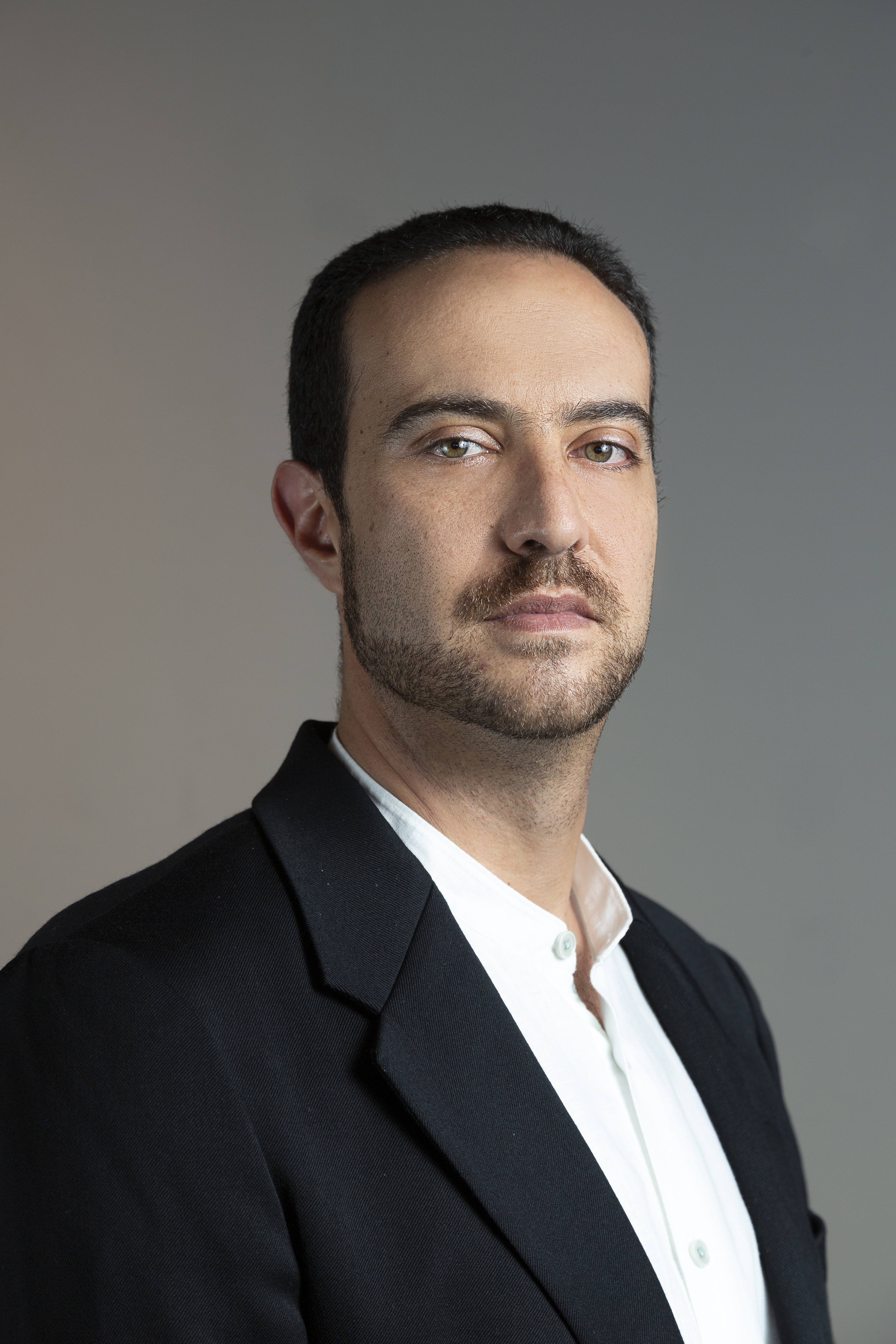
Eduardo Aboumrad Nader
Photography: Walter Shintani
AS A CREATOR OF NEW SPACES, WHAT ASPECTS PLAY A RELEVANT ROLE WHEN DESIGNING A BUILDING THAT IS ENVIRONMENTALLY FRIENDLY?
In my opinion, the most important aspects to be taken into consideration when designing an environmentally friendly building include:
• Respecting the surrounding area where the project is to be designed, ensuring that the building blends into the site.
• For the construction of the project, trying to use, as much as humanly possible, local materials found in the region. This allows us to reduce the carbon footprint of the project by avoiding the need for transporting materials from other regions or countries.
• Leveraging the orientation of the building, as this ensures an efficient design that is capable of driving major savings in terms of investments in cooling and/or heating systems, in addition to promoting higher energy savings and efficiency in lighting design.
• It is vital for the sustainability of the building, to take advantage of the rainwater collection and waste water treatment as much as possible.
• Generating energy through the use of solar panels and/or solar heaters helps reduce the use of energy from other sources.
• Finally, trying to design an adequate waste management system, separating inorganic items for recycling, and using organic waste to make compost or reusing it as a biodigester.
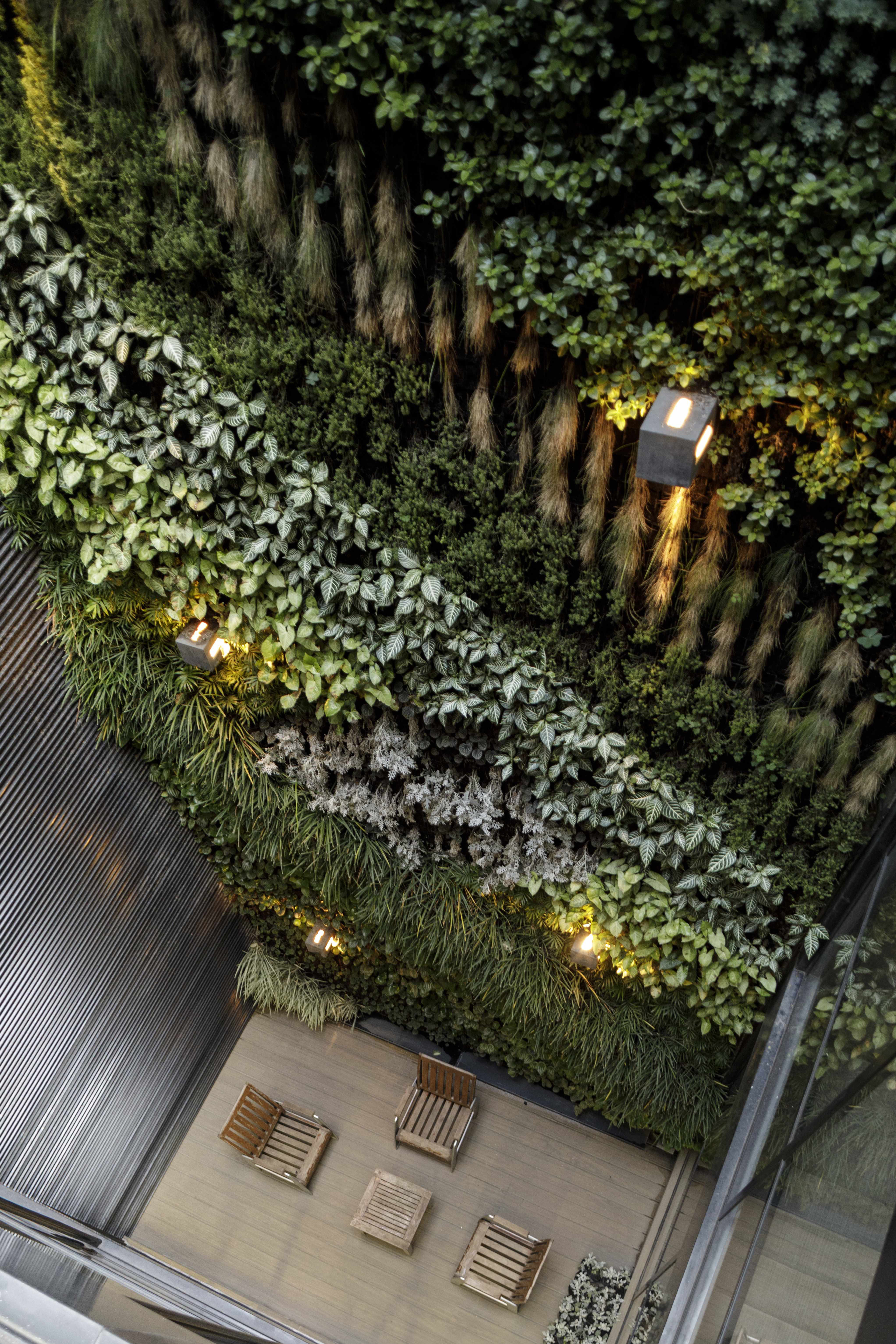
Corporate interior patio G-208
Photography: Walter Shintani
WHICH OF YOUR PROJECTS DEFINES BEST THE CONCEPT OF SUSTAINABLE ARCHITECTURE?
We have several projects in which we have used this type of technology to reduce the impact of our carbon footprint. The project that best describes the concept of Sustainable Architecture, is an office building that we constructed in 2012. In this project, we provided water heating through solar heaters, helping to avoid the use of gas throughout the building.
The installation of solar panels on the roof of the building helped reduce energy use, and, of course every month, this has a positive impact on the property’s owner finances given the significant reductions in energy use.
The building harvests rainwater through a cistern, which is then reused to water plants and wash cars. The green wall within the building creates relaxing spaces for office users, in addition to making the temperature within the office spaces more comfortable.
The design for the lighting was underpinned by indirect lighting, recessed lights and suspended fittings. All the building’s lights use LED technology to reduce energy consumption. The materials used for the details of the building offer low maintenance and high resistance, thus helping reduce the building’s maintenance costs.
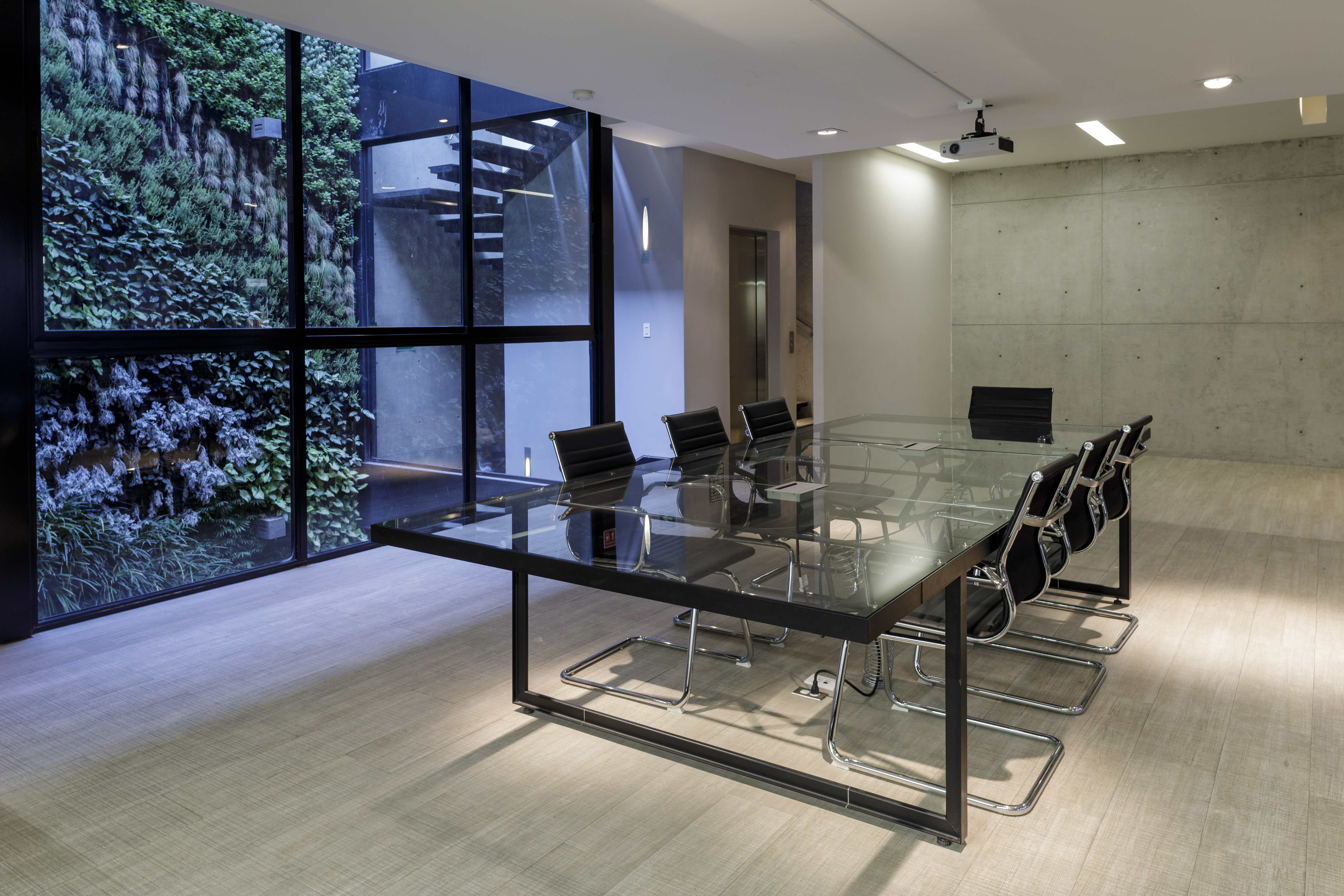
Corporate interior G-208-1
Photography: Walter Shintani
WHAT ADVANTAGES DOES GREEN ARCHITECTURE DESIGN OFFER?
The advantages are extraordinary in terms of costs as investors will see mid- to long-term savings. The major benefits of a sustainable building are:
• Energy savings: To save energy in a building, a number of different technologies can be used, including solar panels, solar heaters, and energysaving lighting.
• These technologies can reduce energy consumption by anywhere between 30% and 100%, i.e., a self-sustainable building that is capable of generating its own energy.
• Water savings: To help save water, there are a number of options available, ranging from watersaving bathroom fittings and rainwater harvesting and reusing through cisterns to the installation of a water treatment plant to recover, reuse and purify waste water. Saving and reusing water is becoming nowadays an ever more important issue.
• Waste management: Making the most of materials to avoid creating waste and ensuring control over building processes, ranging from demolition and excavation to construction, can help reduce the impact of a building’s carbon footprint.
• Design and wellness: Sustainable design is linked to the well-being of the people living in the building. By creating sustainable buildings, we create a more harmonious and productive environment.
Green spaces also help promote a sense of community and awareness among the people who use these spaces, and this awareness is then transmitted to others. Sustainability is not the opposite of good design; in fact, it is the very opposite.
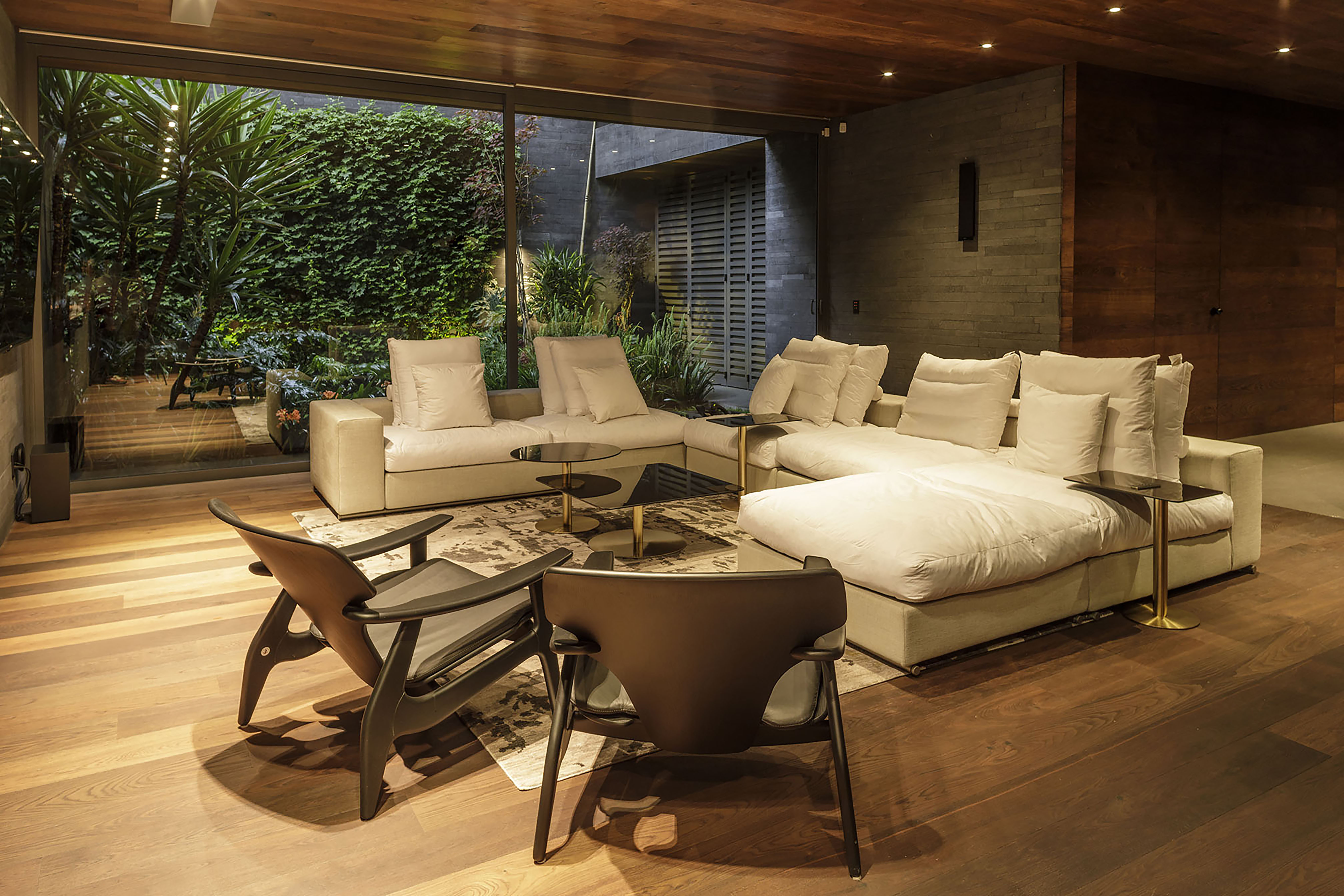
Patio Casa SA-215
Photography: Walter Shintani
WHAT IS THE IMPORTANCE OF INCLUDING VEGETATION IN AN ARCHITECTURAL PROJECT?
It is extremely important to incorporate green elements inside and outside projects, and not only from an aesthetic and decorative perspective. Green elements provide a host of advantages for sustainable buildings:
• They improve the ambience: Plants clean and oxygenate the air, ensuring that spaces feel cooler, in addition to improving air quality.
• They make a better working environment: They promote a feeling of calm, which helps reduce stress levels, increase productivity and boost creativity among the people who use these spaces. If we are talking about a house, green elements improve sleep quality.
• Temperature control: Plants used in buildings act as heat regulators, in addition to adding humidity to spaces when it is hot.
• Green roofs: Green roofs are outstanding at reducing heat island effect, which is caused by most roofs in any given city. A green roof helps to regulate temperatures within the building, in addition to producing oxygen. If they are home to urban gardens, they provide a source of fresh food for the building’s users.
“A sustainable building helps protect the environment”
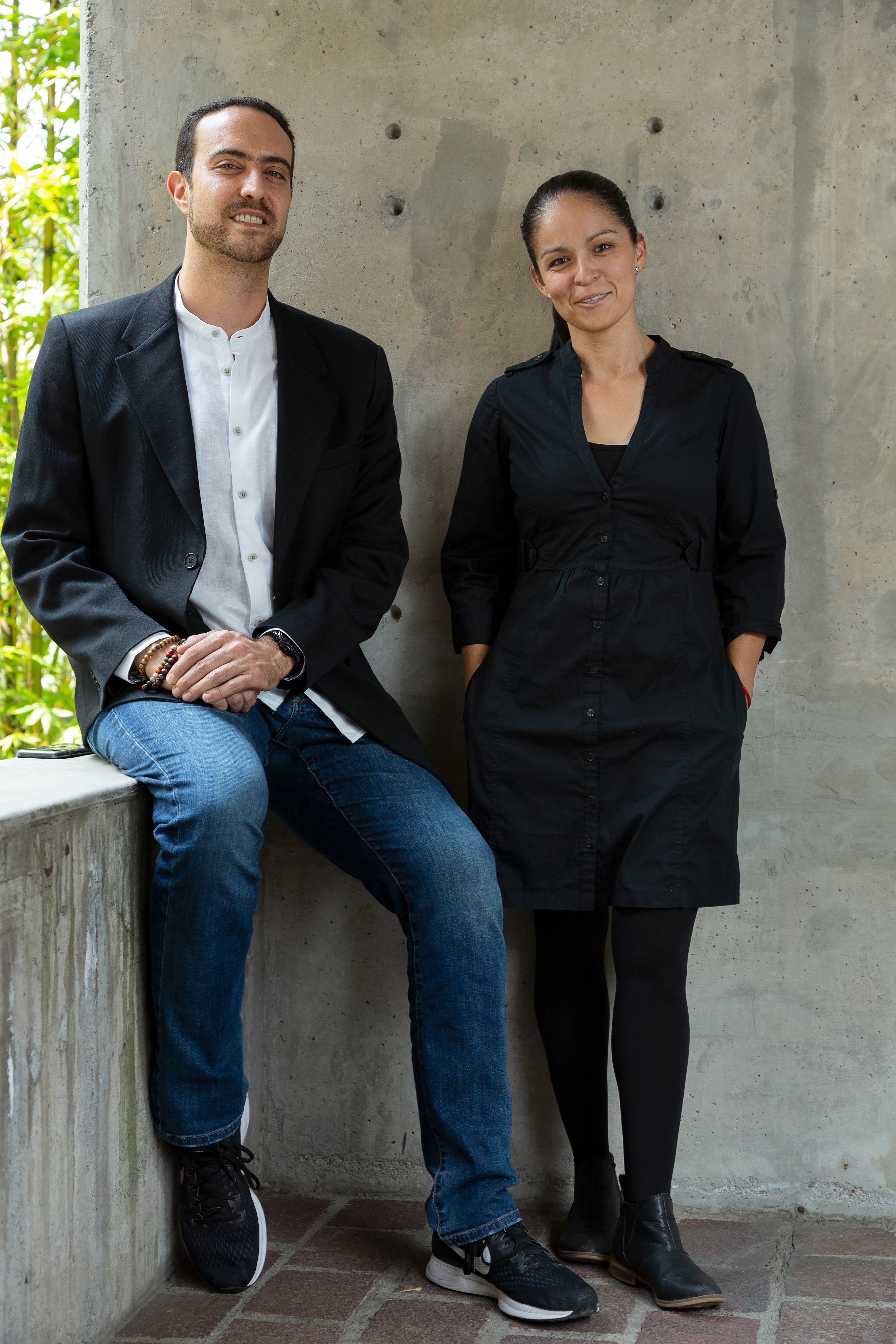
Architect Eduardo Aboumrad Nader, founder of the firm Fi Arquitectos and Susana Tapia Chávez, member of the firm Fi Arquitectos
Photography: Walter Shintani








